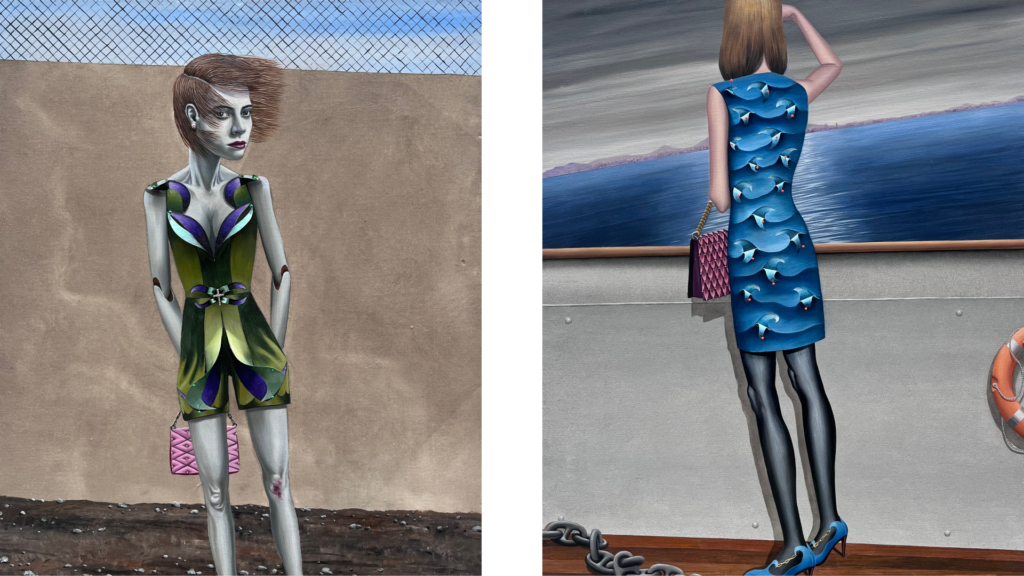- No products in the cart.
Share:
In this new exhibition, Gino Rubert leaves behind the rhetoric of meta-painting in which he was immersed during his large-format polyptychs on the art world. Here, Rubert shifts the focus away from social and sentimental vanities to raw loneliness. Portraits of women trapped by their destiny, with clothes sculpted on the canvas, whose figures are split by the frame, as if the limits of the canvas were trapping them in the same way that the entablature and the base hold the Greek caryatids, those fascinating women-columns that support the south face of the Temple of the Erechtheion in Athens, and with that gesture hold up the world. Powerful women who, far from submitting or resigning themselves, look us in the face, turn their backs, shout, sing, or sail, without ever losing their balance and composure, in a world that is tilted by furious winds.

Childhood (2024). 55 x 46 cm / El desembarco (2024). 81 x 70 cm
After a year working on this new series of paintings, it is time to look at them as a whole, and try to understand where they come from and where they are going. Now, at last, there is room for questions: not while I was painting. Because questions bring answers, and painting – for me – consists of a dialogue between intuitions, forms, colours, and textures, never between ideas, theories, theses or convictions.
So why women alone, why so serious, why trapped by frames that leave part of their feet or their heads out, why do some sing, others shout, others look straight ahead, or turn their backs to us, why do pins hold their dresses, as if they were mannequins or stuffed butterflies?
Undoubtedly, a lot has to do with a certain weariness with all those inquisitive and complicit looks from the hundreds of characters that populate my previous paintings. And in this sense the need for a shift towards more intimate, less strident, more classical, less baroque territories.– Gino
Within the framework of

With the support of


























































































